Exotic Wild Berries and Fruits
by George Powell
For some, picking wild berries is a means to supplement their income. It is tradition and culture for many. For others, it is also summer ritual or a just pleasant way to spend the afternoon in the great outdoors. But, whatever the reason, harvesting some of the natural bounty of wild foods is a pastime that is healthful on many levels.
Berry picking reconnects you with origins of our food. And, it also gives you an opportunity for outdoor activity and exercise. And the fruits of your labour are packed with good-for-you nutrients and phyto-chemicals.
Variety is the Spice of Life
There is sufficient variety in the wild berries and fruits of North America to fill 100 posts on the topic. And, there is nothing wrong in seeking out the common berries of summer, including Saskatoons, huckleberries/wild blueberries, black berries, and others. But I would like to share some of the more exotic berries and wild fruits I enjoy in the wild west. These can be more difficult to find. However, you many not garner more than few pints for your day’s efforts. But quality and novelty more than makes up for the lack of quantity.
Wild Harvest Rules
Berries and fruit, as with any wild treasure, should only be gathered if it is legal and safe to do so. I would encourage you to live by these wild harvest rules:
Know Before You Go
- Know what you are picking. Always make sure you are certain of the species you are picking and eating.
- Know where you are picking. Don’t trespass and make sure you know the site history. Don’t pick on contaminated-polluted soil. Nor should you pick in an area that has been recently treated with pesticides.
- Come prepared. Bring a map of the area, compass/GPS, bear spray, food, water, sturdy footwear and layered clothing. Be bear (and other predator) aware. And let someone know where you are going and when you expect to be back.
Conservation Ethics
- Only harvest what you need. And never take all the fruits from a given patch or bush: it is bad karma to do so. Leave some for the wild creatures that depend on them for food, and so new plants will establish.
- If you pack it in, pack it out. Do not leave your trash in the woods.
With those good words to live by, here are few of my favourite exotic wild fruits for those want to take a walk on the wild side.
Thimbleberry (Rubus parviflorus)
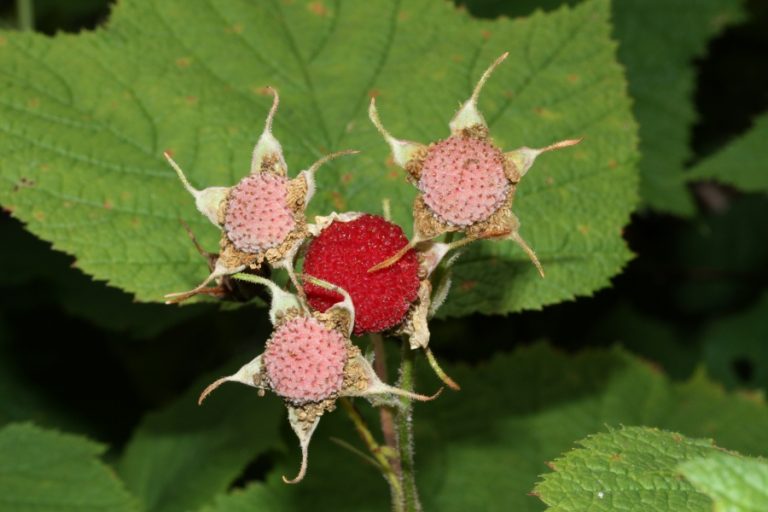
A delicate cousin to the raspberry and blackberry. None of which are technically berries, but rather they are aggregate fruits. But I’ll stow the botanical jargon for another post. This low growing shrub has large light-green leaves that somewhat resemble maple leaves, with five pointed lobes, and toothed edges. The large five-petaled, white flowers grow in clusters at the ends of the stems. And the green to light pink fruit ripens into a deep red.
Eating a ripe thimbleberry has always been a summer treat for me. You likely will never see this berry in a market. Nor be able to gather these fruits in great quantity to take home. Their flesh is so tender and watery that even their own weight will render them into a mushy paste once picked and stacked into a bucket. I prefer to enjoy them as a wild snack on the go.
Red Elderberry (Sambucus racemosa)
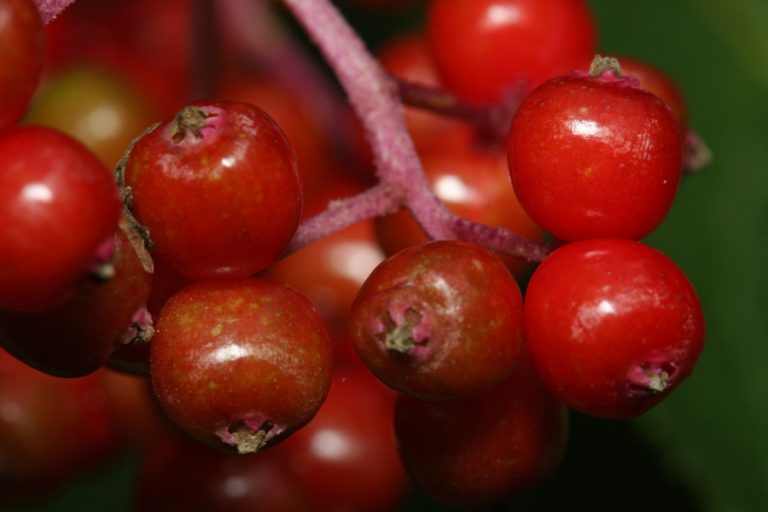
These berries grow on large shrubs, sometimes growing into small trees, approximately 5-m tall. The large, compound leaves are each composed of 5 to 9 pointed leaflets. The flowers are small and creamy-white, and form in small, pyramid-shaped clusters. These clusters give rise to numerous small fruits, which are bright red when mature. Red elderberries are found on moist ground in clearings and under partial shade from open forests. They are delicious fresh or processed into juice and jelly. They cure well in the sun and can be dried for later use.
Pin Cherry (Prunus pensylvanica)
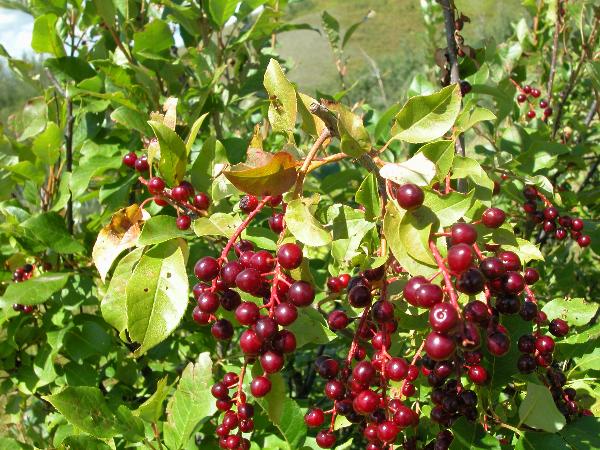
Not be confused with its botanical relation, the chokecherry (Prunus virginiana). Pin cherries form on small trees, from 1- to 5-m tall. The bark is smooth and grey in colour. Its leaves are elliptical, and sharply pointed, and finely toothed around the edges. White flowers, formed in small clusters, give rise to small cherries (0.5 to 1.0 cm diameter), slightly elongated, and ranging in colour from bright-red to almost black.
The flesh of pin cherries is very tart and encases a large stone. The astringent tartness of this fruit is very much an acquired taste. Many people prefer to boil the fruit in order to extract juice, which makes for a fantastic flavouring or base to make jelly or syrup.
Highbush Cranberry (Virburnum edule)
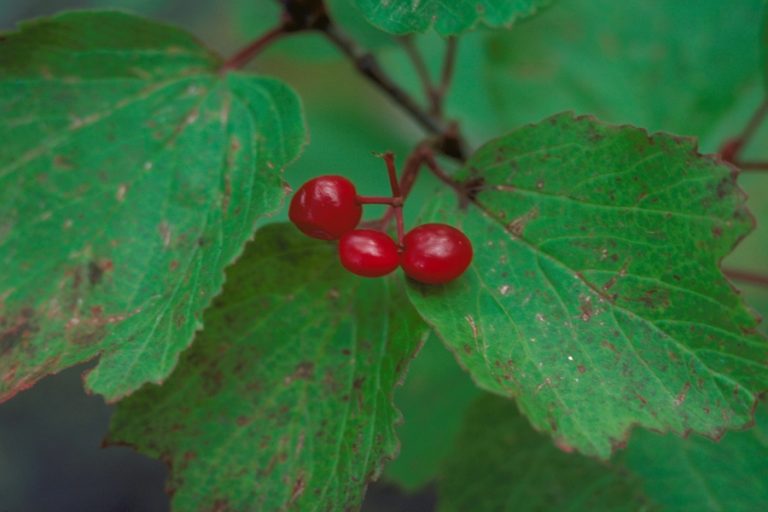
These wild cranberries grow on small to mid-sized shrubs (approx. 0.5 to 2-m tall) with smooth red-coloured bark. Leaves form in opposite pairs along the stems with three shallow lobes at their tips. Flowers form in small, round clusters and develop into shiny red-orange berries, with a large flat seed in each berry. Highbush cranberries are quite acidic. Though the taste can be tempered by autumn frost.
Honey Berry (False Solomon’s Seal, Smilacina racemosa aka Maianthemum racemosum)
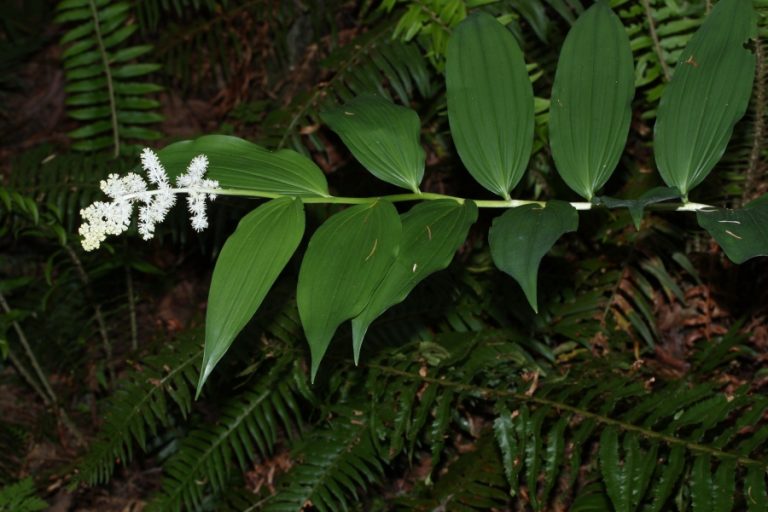
These exotic berries grow on a tall perennial plant with broad elliptical leaves alternating along arching stems. Clusters of small white to cream-coloured flowers form at the ends of the stems and develop into small, somewhat seedy berries. Immature berries are mottled green and brown. Berries are red when ripe.
These wild foods are a favourite of bears. And because of that, it is sometimes difficult to find ripe berries in bear country. The ripe berries are extremely sweet and delicious, but when unripened they are inedible save for those with the strongest of stomachs.

Three comments on “Exotic Wild Berries and Fruits”
Nibbles: Gossypium, Helianthus, Cacao, Berries, Heirlooms, Seminars
Pingback: Exotic (North American) wild berries deconstructed.
Sharon Neufeld 29 August 2011 at 9:22 am
I enjoy reading your posts thanks so much… NTFP process continues here in Clearwater albight at a snails pace….First Nations process and MOU seems to hold things back. We had a bumper crop of black huckleberries at the lower elevations but the higher vaccinium’s (above 800 feet) did not even get pollinated and what did will not likely ripen this year… I wanted to ask if you have actually eaten the red elderberry as I have always avoided doing so for fear of gastric upset and if so is it after they have been cooked? I would like to send info on the courses the WGCF is sponsoring this fall if you could post them on your site that would be great!! I (and the WGCF) have been working with Evelyn Pinkerton Masters Student Samantha Charleton this summer as she observes our progress on the development of NTFP and will no doubt come up with some interesting stuff.
George Powell (responding to Sharon Neufeld) 29 August 2011 at 10:38 am
Hello Sharon,
I have eaten red elderberries, and yes, unless you get them fully ripe, they can cause stomach problems for some. Boiling them to extract juice seems to help. As with all the wild fruits I highlighted in this post, they are meant as an exotic treat, not a dietary mainstay.
I am always happy to post agroforestry/ntfp related news and information. You can email me directly or use the contact form on this site (I don’t post my email addy on the website to keep the spambots at bay).
Comments are closed.
Subscribe via RSS
